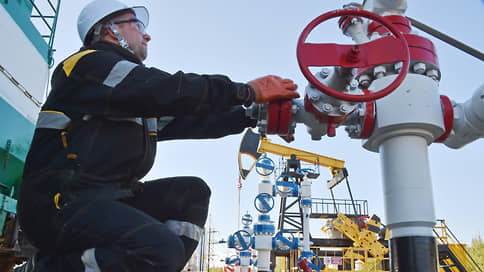OPEC expects oil to continue to dominate the energy market for the next 20 years
[ad_1]

Oil will maintain a leading position in the global energy balance at least until 2045, and demand for it will continue to grow during this period, according to the annual long-term forecast of OPEC (World Oil Outlook). The volume of investment that will help the oil sector meet growing demand is estimated at a total of $14 trillion. Such expectations of the cartel are at odds with the forecasts of another specialized organization, the International Energy Agency (IEA), whose analysts believe that oil consumption will peak in 2030, and the idea of the need for significant investments in the sector contradicts the general logic of achieving climate goals.
In the long-term report released on Monday review OPEC market predicts a steady increase in oil demand – it is expected that in 2022–2028 it will increase by 10.6 million barrels per day (b/d), to 110.2 million b/d. Demand will grow most significantly in non-OECD countries: by 10.1 million bpd to 63.7 million bpd. The increase will be largely due to China (plus 2.7 million b/d, up to 17.5 million b/d) and India (1.6 million b/d, up to 6.8 million b/d). In OECD countries, demand will increase by only 0.5 million b/d, to 46.5 million b/d, while in Europe consumption is projected to decline by 0.1 million b/d, to 13.4 million b/d.
According to OPEC expectations, growth will continue, but will slow down. By 2045, it is projected at 116 million b/d. In countries outside the OECD, compared to 2022, it will increase by 25.7 million b/d, to 79.4 million b/d, including in China – by 4 million b/d, to 18.8 million b/d , in India – by 6.6 million b/d, to 11.7 million b/d. In OECD countries, on the contrary, demand will fall by 9.3 million b/d, to 36.7 million b/d. The multidirectional dynamics are explained, among other things, by the complexity of restructuring energy markets in developing countries.
By industry, the largest increase in demand for 2022–2045 is expected in the transport sector (by 9.8 million b/d, up to 66.4 million b/d) and in industry (by 5.8 million b/d, up to 32.9 million b/d).
Promoting the idea of growing demand, OPEC insists on the importance of additional serious investments in the industry: we are talking about a total of $14 trillion in the period until 2045 (or $480 billion per year).
Most of the funds – $11.1 trillion – are needed for field development and production. The remaining investments, according to OPEC estimates, should ensure uninterrupted refining, transportation and storage of fuel.
The organization points out that calls to reduce investment in the sector will lead to a supply shortage and, as a result, price volatility. In fact, this statement is a response to recent statements by the IEA. The agency expects global oil demand to peak by 2030 (see “Kommersant” dated September 14) and are expected to decline after this date due to the widespread use of renewable energy sources. Moreover, the IEA insists that increasing costs for traditional fuels only delays the achievement of climate goals, including carbon neutrality by 2050.
Let us note that the current pace of energy transition hardly makes it possible to talk about limiting investments in the oil sector.
The climate goals themselves seem increasingly less achievable within the designated time frame: it is estimated that their implementation will be costly for both developed and developing countries (see “Kommersant” dated August 10 And The 4th of October).
As follows from the OPEC review, oil will account for the largest share of the global energy balance in the next 20 years. However, it will decrease slightly: from 31.2% in 2022 to 29.5% in 2045. The share of gas over the same period will increase from 23.1% to 24.2%, biofuel – from 9.1% to 9.8%, nuclear energy – from 5.2% to 6.6%. The share of coal in the energy balance will decrease significantly – from 26.1% to 15.1%. Coal, OPEC believes, will be the only type of fuel for which demand will decrease from 75.9 million barrels of oil equivalent per day in 2022 to 54.4 million in 2045. The reduction will largely be ensured by the climate commitments of OECD countries.
[ad_2]
Source link






